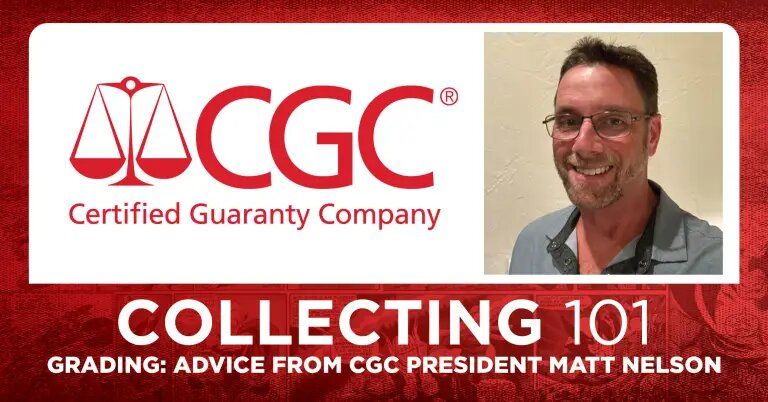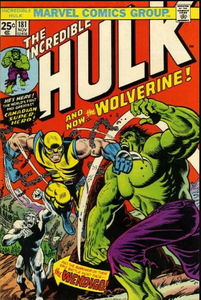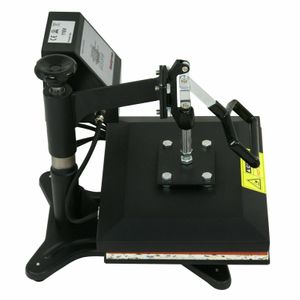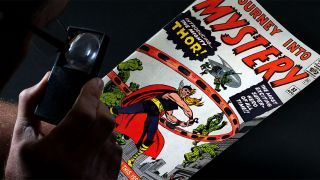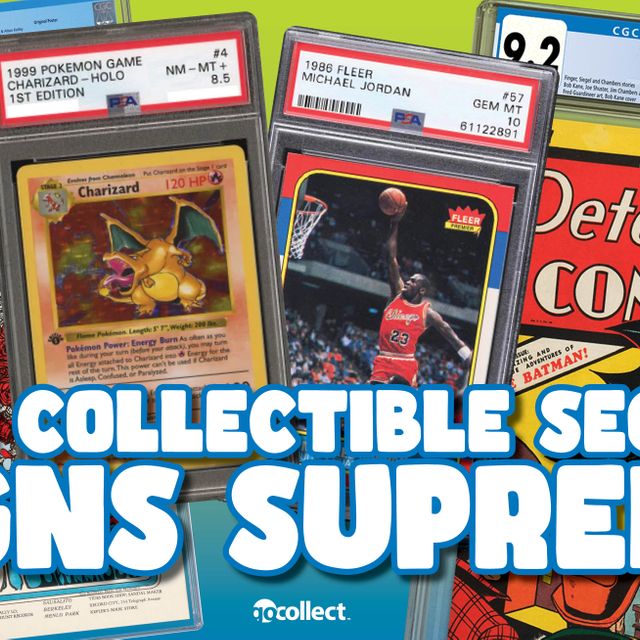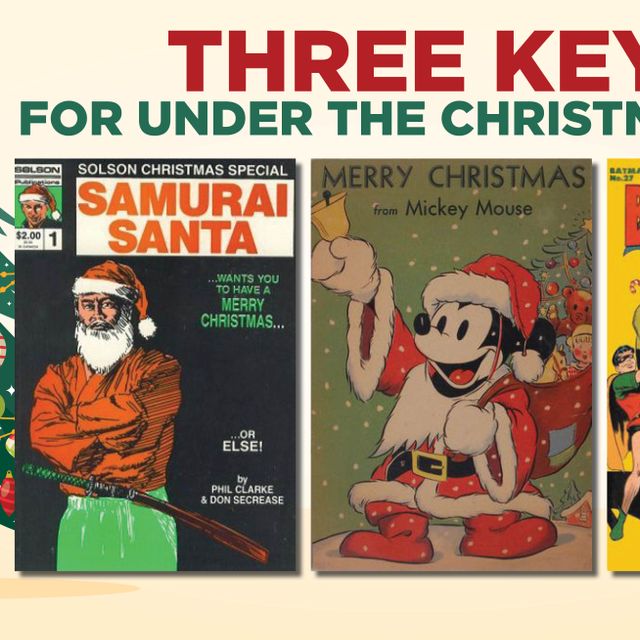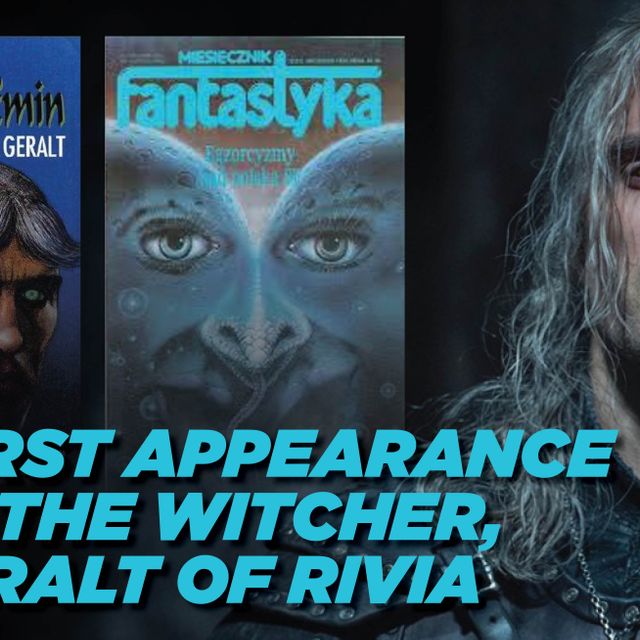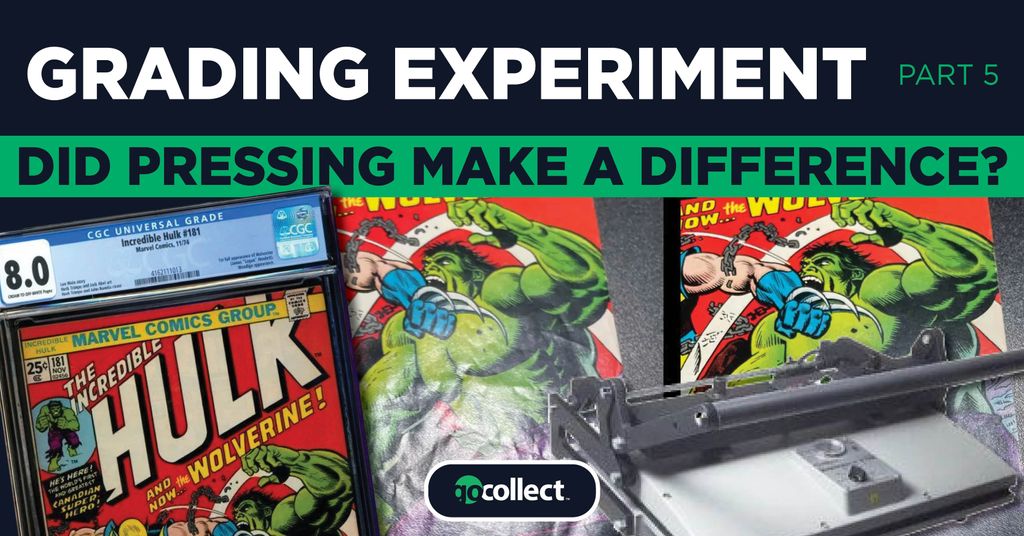
Previous Grading Experiment Installments
Comic Book Grading Experiment: Advice from CGC President Matt Nelson (Part 1)
Advice from CGC President Matt Nelson: The Grading Process
Grading Experiment Pt 2: Buying Raw Books to Maximize ROI
Grading Experiment Pt 3: Submitting Books to CGC
The Grading Experiment Part 4: The Results Start Trickling In
A Hypothesis Tested
The GoCollect Comic Book Grading Experiment began with a talk with CGC President Matt Nelson. Matt stated that he started his career as a comic book presser. He then stressed how a good pressing is essential to obtaining the highest grade possible for a comic book. Comic book pressing is not considered restoration, and thus it can improve the condition of the comic while not altering it from its original state according to comic book grading standards.
The importance placed upon grading had to be tested to determine the potential impact on a comic book's grade, and what better test subject than one of the most sought-after comic books in the hobby.
"Don't Be What They Made You"
Wolverine gave that memorable line to X-23 in "Logan". It describes how one is not forced to be what someone else had intended. That describes comic book pressing. Pressing makes books better. As a result, Incredible Hulk #181 was chosen for this part of the experiment. Any increase in the grade of this issue could equate to a potential profit of thousands of dollars.
A client of mine had two perfect specimens that could be used for the pressing test. Each was purchased at roughly the same time 10 years ago by the same means. The grades affixed to each issue were provided by a vendor affiliated with the Overstreet Price Guide at the time of purchase.
The owner of these books believed that the grade selected for each book was a fair assessment at the time based upon their considerable knowledge of the hobby.
Test Subject #1
The owner and this journalist decided that the first book selected would be the one assigned the lower grade of the two. The book was graded at the time of sale to be roughly an FN/VF book by the seller and buyer. It was a nice book with crisp pages and covers. One of the main flaws that knocked this book down was the creases on the cover. Two visible non-color breaking creases are the main flaws of this book.

This was the first book purchased and was done so because it was visually appealing, but the visible defects made this book roughly $150.00 cheaper than the other subject.
Test Subject #2
This book was purchased a short time after the first book. Both the vendor and the owner had this book graded as a VF-. This was a fair grade for this book at the time of purchase. There were visible color-breaking ticks on the book's spine that were significant enough to drop this book's amateur grade. Other than those defects, the book was visually appealing.
This book was one of the crown jewels in the owner's collection and was treated as such. He was willing to keep this book but part with the other one before grading.
Test Process
The books were sent in as separate orders to ensure the correct grade was given to each book. Each book was pressed and graded by CGC in their walk-through service. All postage and grading fees were paid by the journalist to produce this experiment and provide access to the information that evolved throughout the process. It should be noted that the time to press and grade the books was minimal at best.
The Results

Both books came back with better grades than at the time of purchase. This demonstrated that the original grader of the books was accurate with the grade. It also illustrates that having books pressed, if at all possible, is a great decision to make. The elimination of any flaws could potentially increase the grade of a book even a half grade. That grade improvement could be worth multiple times what it costs to press the book. This was seen in each of the subjects.
Test Subject #2 Results
This copy of Incredible Hulk #181 came back with a grade of 8.0. This translates to a VF grade on the CGC grading scale list. The grader notes indicate that it had off-white pages, a crease with a cover break at the bottom right cover, multiple spine stress lines on the cover, and very light wear on back cover.
The owner was pleased because the FMV for this grade is $6500. This is a price that they could have not purchased the price graded now. The price for a copy in that grade cost a little over $1,000 at the time he made his purchase. The owner said the price he paid was less than that amount but that the convenience of the sale more than made the purchase of this raw book a correct one.
Test Subject #1 Results
The best was saved for last. This copy of Incredible Hulk #181 came back with a grade of 9.4. This translates to an NM grade on the CGC grading scale. This was a large increase from the original 7.0 FN/VF grade at the time of sale. The grader notes indicate light spine stress to covers and wear to the cover.
The creases on the cover disappeared after the pressing process. The FMV for this copy is listed at $14000!!! Remember that the book was purchased at a price point lower than the first copy. The cost for this book at the time of the original purchase was around $3000.
This is well more than the original raw purchase price. This book being purchased raw was a great decision.
Interpreting the Results
Not all Defects are Equal
Visible comic book defects have varying degrees of success for improvement with pressing. Matt Nelson went into some of the defects that are ideal for pressing while other books can actually be harmed by the process. CGC produced a book titled "The Official Guide to Grading Comics" that goes over all the types of defects that they have encountered.
The ability to identify those defects that can be improved with pressing is one way to find deals. In the experiment, the book that was considered to be the lesser of the two turned out to be a true gem.
Pressing Matters
The results indicate that pressing improved the grades of the submitted raw comics. The price of the comic should not be a deciding factor on if the comic should be pressed because of the potential for comics to appreciate in value. This was revealed in the rise of value of the Incredible Hulk #181 books submitted for grading. These books appreciated in value because of the pressing.
The scary thing is that when one buys a graded book, there exists uncertainty about whether the book was pressed before grading. If the second subject was not pressed, thousands of dollars could have been left on the table. Pressing is that important.
Value in Graded vs Raw
Pressing is important. That is the second time that statement has been mentioned in this article but it is something that should be stressed. Graded books are assumed to be in their best pressed condition and thus a premium is assigned to these books. Raw books are just that; raw. Their true value is uncertain.
Practicing fixing a raw grade to a book and identifying flaws that can be improved by pressing creates opportunities for finding great deals. The ability to negotiate a nice sales price only enhances those types of opportunities.
Conclusion
Real estate investors have realized for years that investing in viable distressed properties is one way to ensure a sound return on investment. The ability to find properties that can be improved with a minimum amount of money to maximize the property's value is the goal of these types of investors.
The same can be said for both comic book investors and collectors. Raw comic books are the fixer uppers of the comic book world. They offer the potential for great returns to comic book investors while at the same time providing collectors with the ability to purchase books far beyond their true FMV.
The key to finding good deals is to identify the flaws of comic books. Once the flaws have been identified, the odds of eliminating them through pressing must be calculated. Remember that pressing is not going to eliminate all defects, but any defect that can be eliminated only can improve the grade of a comic book.
In subject #1, the true grade of the comic book was close to what both buyer and seller had deemed to be for the book because the pressing only had a minimal impact on the final grade. The better you get at self-grading comics, the better equipped you'll be to see the deals that exist in raw books.

